[Review] Planescape: Torment and Icewind Dale: Enhanced Editions – Nintendo Switch
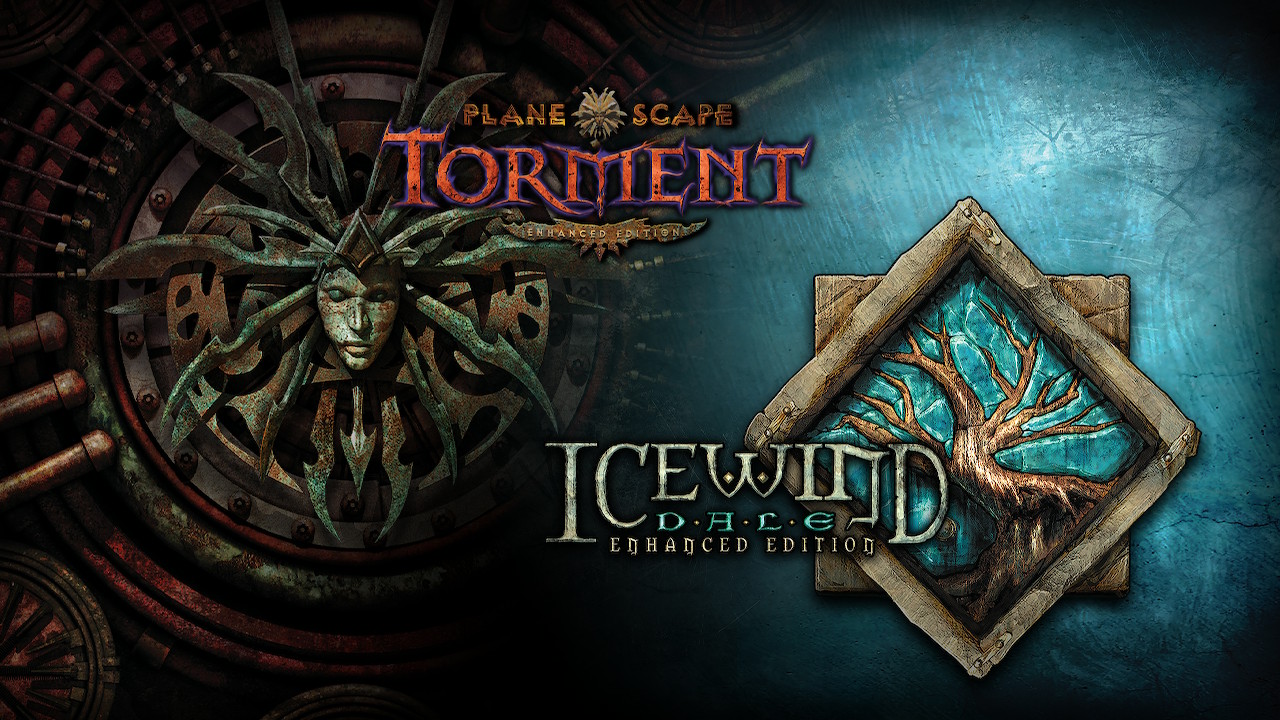
Planescape: Torment and Icewind Dale: Enhanced Editions
Nintendo Switch
Developed By: Beamdog
Published By: Beamdog
Category: Role-Playing, Adventure
Release Date: 10.15.19
Baldur’s Gate is one of the series that has had the most influence on my taste in games. Its blend of deep strategy and deep, responsive narrative blew my tiny mind from the moment I booted up the first game in 1999. The Infinity Engine on which it ran spawned other franchises, too, namely Icewind Dale and Planescape: Torment. Pretty much all of the Infinity Engine games have been issued as Enhanced Editions by Beamdog in the last five years, and now they’ve somehow made their way to consoles. Most notably for this website, they’ve been released in two two-packs for the Nintendo Switch. I’ve already written a review for the Baldur’s Gate two-pack, and today we’ll be looking at the Planescape: Torment and Icewind Dale: Enhanced Editions for the Nintendo Switch. The game systems are almost identical, so I apologize if some of the material seems familiar from that review. I did try my best not to self-plagiarize.
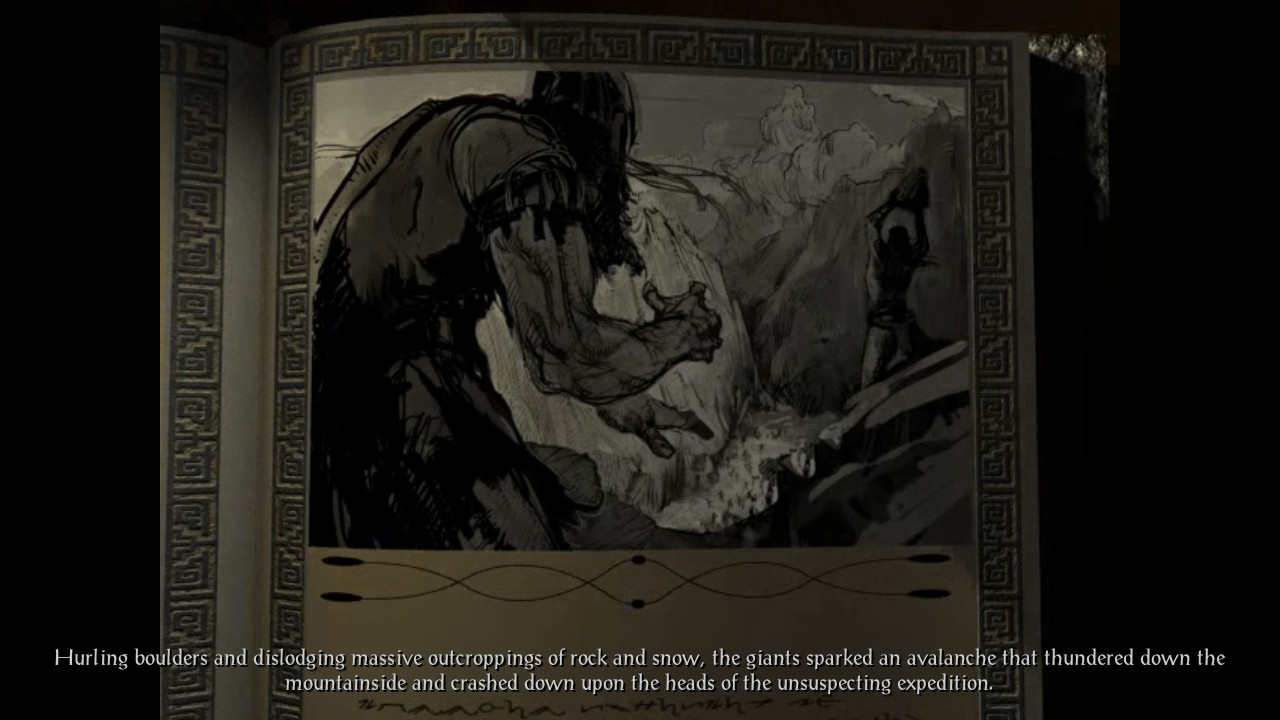
Icewind Dale
Icewind Dale is by far the most straightforward of the four Infinity Engine enhanced editions, at least in terms of story. There aren’t really many branches to follow, which makes the game feel a little hollower than its brothers, but we’ll come back to that. You take command of six adventurers that have traveled to the northern town of Easthaven seeking fame and fortune. They sign on to an expedition to investigate the troubled town of Kuldahar. The party becomes embroiled in the mysterious events plaguing the town, fighting through dungeons full of the undead, cultists, lizard people, cultist lizard people, and far, far worse. This edition of the game also features the Heart of Winter expansion, the only expansion created for it, which adds some cool new dungeons and another major questline to the proceedings.
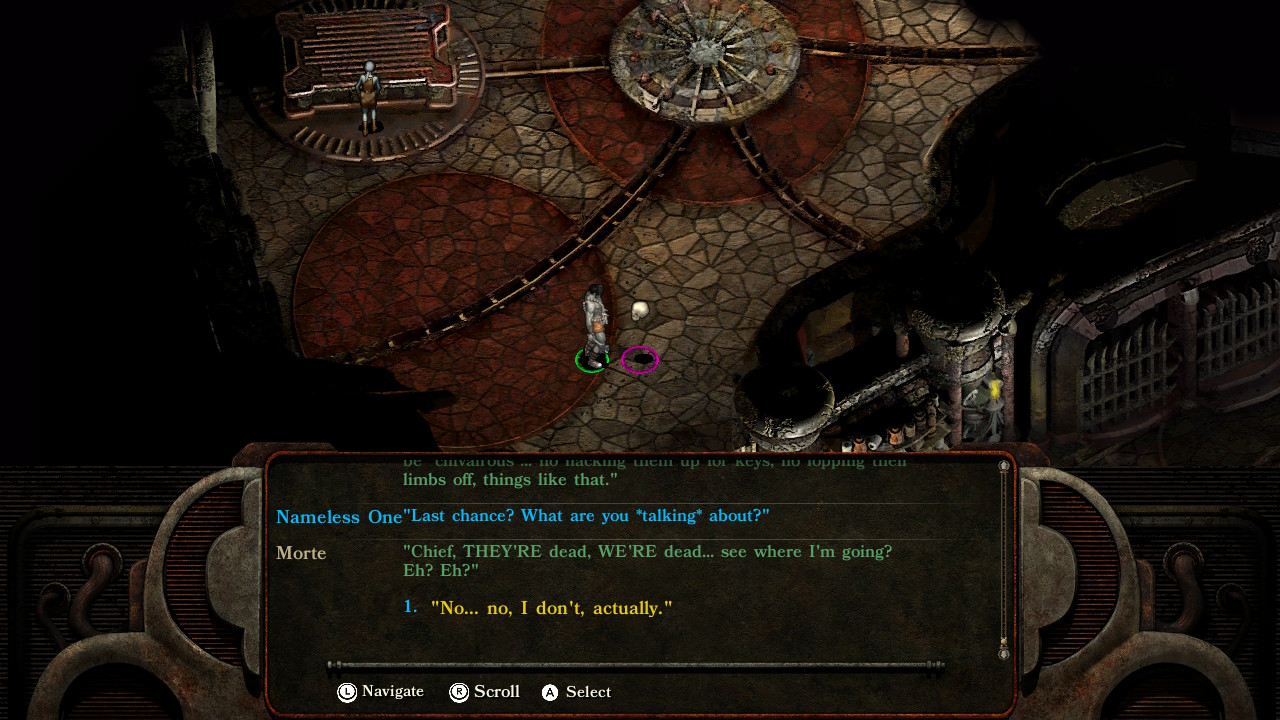
Planescape: Torment
And here we get to the crown jewel of today’s subjects; the game that truly established the power of the narrative mechanic of the Infinity Engine quartet. Players take control of the Nameless One, an immortal amnesiac in search of his memories. The game takes place in Sigil, the City of Doors, which sits at the intersection of several realities and hides thousands of secret doors and paths – not unlike our hero’s scattered memories. Planescape: Torment is far and away the most original and distinctive of the Infinity Engine games; its setting is a grungy, fantasypunk world that doesn’t rely on the typical western medieval fantasy tropes that BG and IWD play with. Furthermore, its story deals with the introspective elements of morality and consequence rather than the more swashbuckling adventure tropes found in its brothers. If you want a game that truly lets you play a role in guiding its story, Torment is the absolute best you will find.
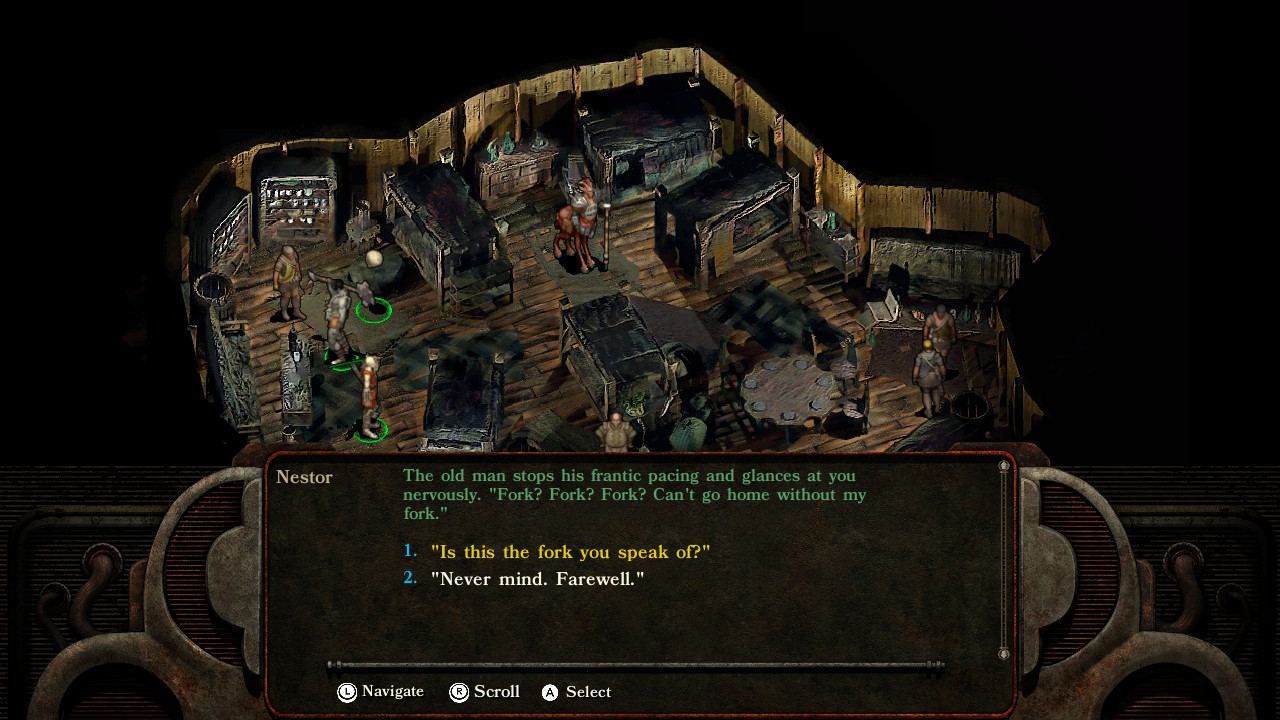
A Tale of Two Tales
Planescape: Torment is one of the most groundbreaking narrative gaming experiences of all time. This is established fact. The reactivity of the story is unparalleled; certainly Baldur’s Gate allowed for players to have great freedom of choice, but Torment takes it to a whole new level. If you want to, you can talk your way out of almost anything if you have the right stats. Or, you can build a bully and slaughter your way through the Nameless One’s journey. Personally, I found it much more satisfying to experience the more diplomatic aspects of the branching narratives. You can have a completely different story each time you play through Torment – it’s one of the reasons it’s one of my personal top ten games.
It’s also why I’ve always felt a little let down by Icewind Dale. It’s far and away the most accessible game in the Infinity Engine quartet, but that’s at least partially because of how shallow the story ultimately is. Its focus is on dungeon crawling; there are no companions to recruit and relate to and the antagonists and NPCs just aren’t as deeply defined or explored. It’s not a bad experience by any stretch of the imagination, but the narrative feels less impressive when compared to its brothers.
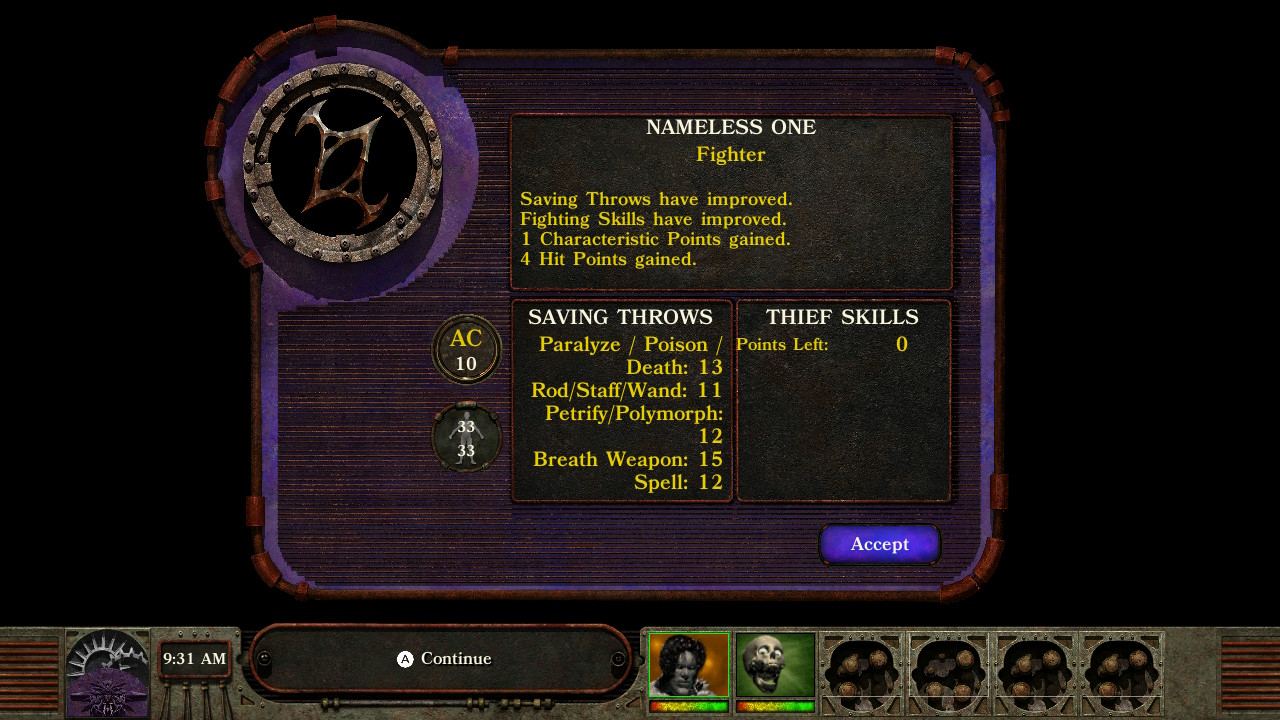
Rolling vs Building
Icewind Dale has you roling your characters the same way you do in Baldur’s Gate; you pick a race and class then the game rolls some dice to determine your stats for you, and you can redistribute points if you wish. Planescape: Torment is fairly similar in terms of gameplay, but its character creation is slightly different. You start with a set statistic in each number, and you have 21 points to distribute as you see fit; you can even lower some of your starting stats to get more points to redistribute, if you want. As you gain experience and level up, you gain more points to assign to your attributes so your character can grow more powerful as the game goes by. It fits in with the game’s narrative of an immortal regaining his power as he regains his memory, so it’s a pretty cool example of a way the game engine can reinforce story elements. Still, in both games, most of your character progression comes from finding new equipment, like the Baldur’s Gate series. This is one of Icewind Dale’s most satisfying elements; magic items practically rain from the sky, and finding a powerful new weapon to wield always provides a nice bit of excitement to the game.
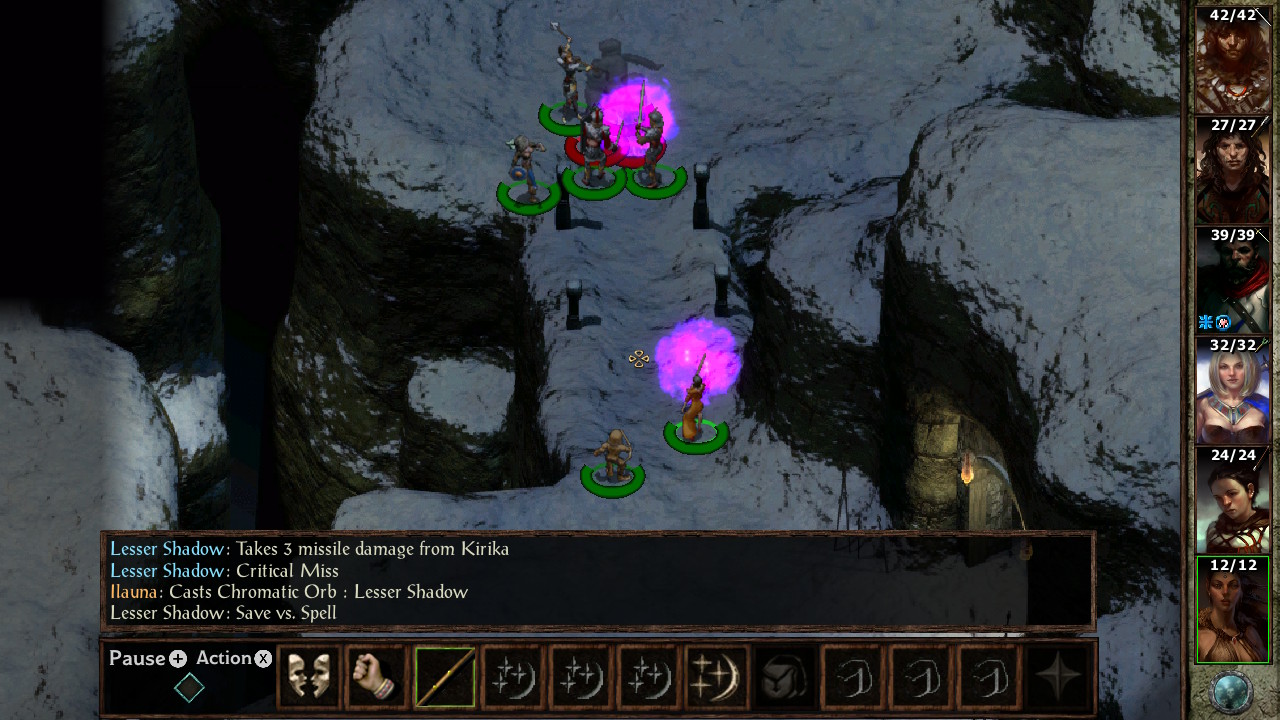
Take Your Turns in Real-Time
The innovative blend of real-time and turn-based combat pioneered by the Infinity Engine in Baldur’s Gate makes a triumphant return in both Planescape: Torment and Icewind Dale. A combat “turn” consists of a few seconds in real time, and each character has a certain number of actions they can take in that turn – most of the time this number is one, but more powerful characters can have multiple actions and certain buffs can increase that number, too. Pausing the game is the single most useful feature of the battle system; effectively issuing orders to your whole party in real-time is next to impossible, but pausing the action to consider your next moves creates the perfect balance of action and strategy.
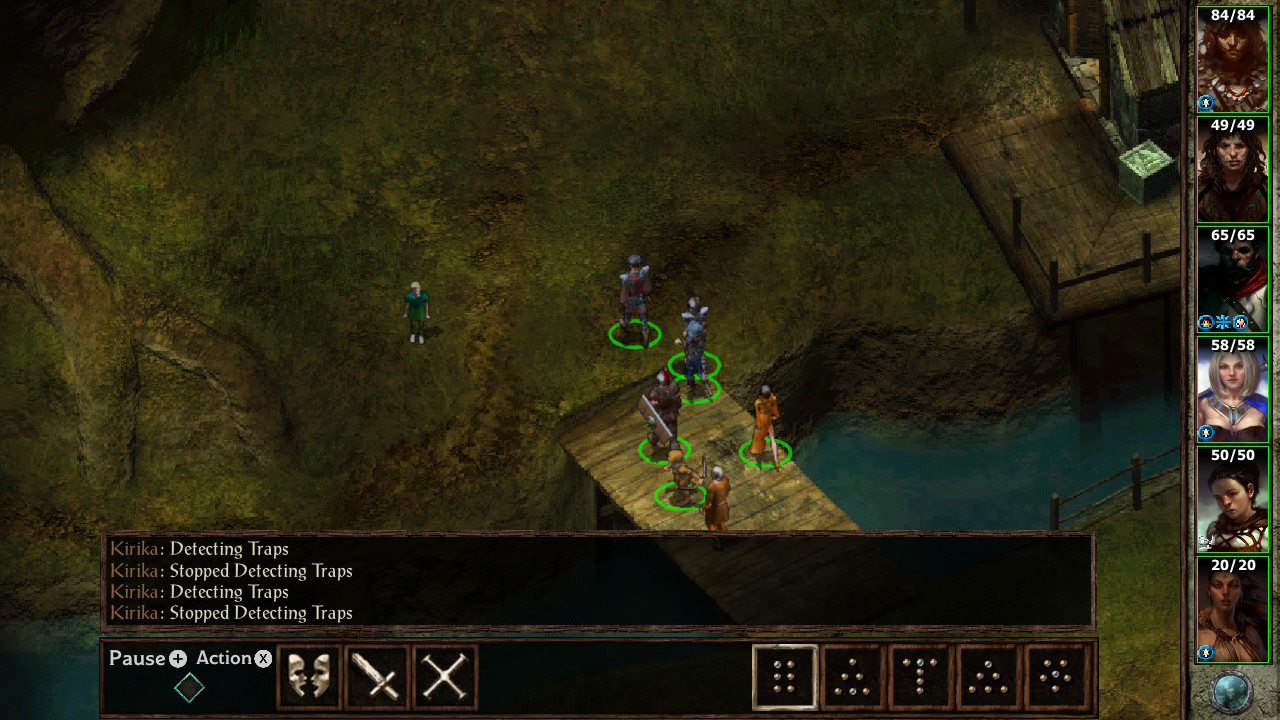
Helpful Input
Heading into these games, I was most worried about the control scheme. The Infinity Engine games were developed for the PC and a mouse and keyboard input, after all – could a controller keep up with that level of flexibility? The answer, surprisingly, is yes – mostly. Selecting party members, issuing commands, and managing your party on the screen are all relatively smooth actions after a small acclimation period. Navigating menus and inventories are not as efficient as they are with a mouse and keyboard; inventory management is especially more cumbersome with a controller. It’s not nearly enough to ruin the experience, but it is noticeable, especially in a game like Icewind Dale where the focus is so heavily on dungeon crawling and loot gathering.
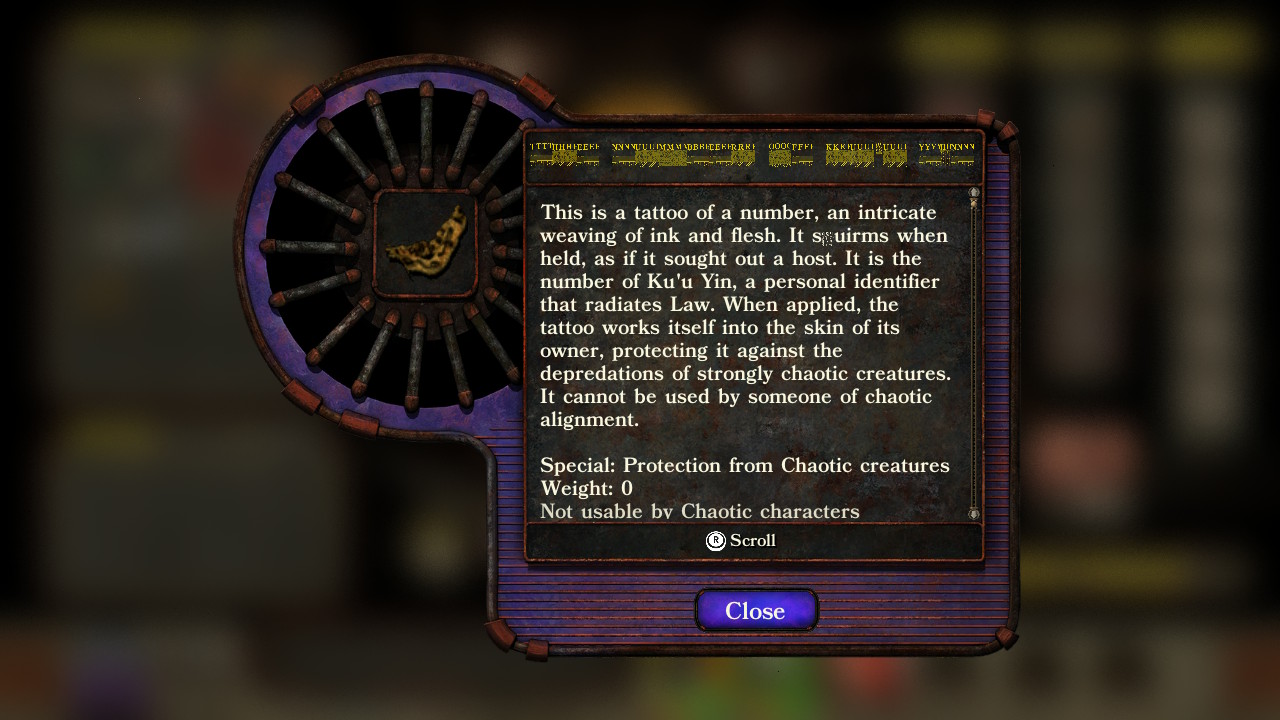
Enhanced Can Be a Relative Term
Both games have had graphical overhauls to make them look better in HD, but that really doesn’t stop them from showing their age a little in the visual department. I mean, both games are nearly twenty years old – there’s only so much a facelift can do for them. They make up for it in ambitious visual design – especially Torment. Even twenty years after release, I can’t think of a single game that looks like it. I don’t want to knock Icewind Dale’s visuals though; the massive dungeons feature some grand, imposing designs that add an impressive sense of scale to the proceedings. Torment did feature a few visual bugs that I experienced during the game; most notably, if I increased the size of the text it would result in some text becoming glitched and appearing as just a blast of pixels (see the screenshot above). The enhancements made to the audio tracks are more generally positive; the music, sound effects, and voice acting come through crystal clear in high fidelity. You’d never know they were taken from twenty year old digital recordings.
Dungeons and Doors
I can’t express how amazed I am that the Infinity Engine games have been made to run this well on console. They were some of my favorite games throughout middle school and high school, and I can honestly say they are every bit as good as I remember. The Infinity Engine is a perfect template for building a game that combines deep, strategic combat and expansive, branching narratives. Certainly the visuals look a little dated and there are some hiccups in the control scheme, but those are minor inconveniences, bordering on nitpicking. The Planescape: Torment and Icewind Dale: Enhanced Editions still provide a completely satisfying experience.





Buy Planescape: Torment and Icewind Dale: Enhanced Editions
$49.99
Follow Beamdog

*A game code was provided for review purposes.








![[Review] Tick Tock : A Tale for Two – Nintendo Switch](https://theswitcheffect.net/wp-content/uploads/2020/01/TickTock-3.jpg)
![[Review]Garbage Pail Kids – Nintendo Switch](https://theswitcheffect.net/wp-content/uploads/2022/12/20230201_061645.jpg)
![[Review] Across the Grooves – Nintendo Switch](https://theswitcheffect.net/wp-content/uploads/2020/07/Across-the-Grooves.jpg)